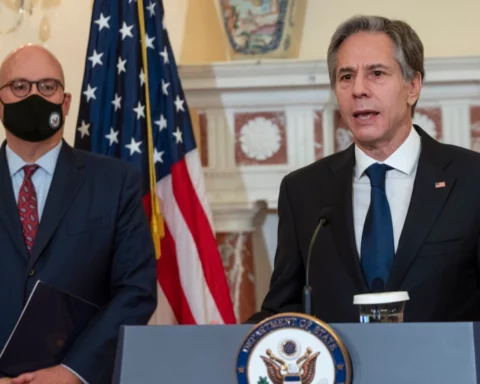WASHINGTON — President Biden signed the Amache National Historic Site Act today, designating the Amache site in Granada, Colorado as part of the National Park System. This designation, the first in the National Park System during this Administration, will permanently protect the site for future generations and will help tell the history of Japanese American incarceration during World War II. “As a nation, we must face the wrongs of our past in order to build a more just and equitable future,” said Secretary of the Interior
. “I applaud President Biden and the bipartisan action in Congress that has ensured this important and painful chapter in our nation’s story is preserved and honored for the generations to come. After visiting Amache and meeting with survivors and descendants, I was moved by their resilience and the way in which Colorado communities came together during and after the injustice to support Japanese Americans. May we all be inspired to do the same today for all our fellow citizens.”
Amache, also known as the Granada Relocation Center, was one of 10 incarceration sites established by the War Relocation Authority during World War II to detain Japanese Americans forcibly removed from the West Coast of the United States under the terms of Executive Order 9066. More than 10,000 people were incarcerated at Amache from 1942-1945, which housed 7,310 incarcerees at its peak, two-thirds of whom were United States citizens.
“It is our solemn responsibility as caretakers of America’s national treasures to tell the whole story of our nation’s heritage for the benefit of present and future generations,” said National Park Service Director Chuck Sams. “The National Park Service will continue working closely with key stakeholders dedicated to the preservation of Amache, and those directly impacted by the incarceration of Japanese Americans during World War II, to preserve and interpret this significant historic site to the public.”
Today, the Amache site consists of a historic cemetery, a monument, concrete building foundations, and several reconstructed and rehabilitated structures from the camp-era. Amache was listed in the National Register of Historic Places on May 18, 1994 and designated a National Historic Landmark on February 10, 2006. Amache is open to the public and currently managed by the Amache Preservation Society and owned by the Town of Granada. Currently, Granada High School students from the Amache Preservation Society provide tours of the site and nearby museum. The National Park Service will continue to work closely with the many stakeholders dedicated to the preservation of Amache to continue those services, and to care for the history and memories of those who were once incarcerated at this site.
The designation of the Amache National Historic Site is an important step in telling a more complete story of the Japanese American incarceration during World War II. Many stakeholders, including former incarcerees and their descendants and the Amache Preservation Society were instrumental in obtaining the initial National Historic Landmark designation and advocating for the site to become part of the National Park System. The legislation, originally introduced by members of the Colorado delegation, garnered strong bipartisan support in the House and Senate.
Secretary Haaland visited the Amache site in February with Senator Michael Bennet and Representative Joe Neguse to honor the 80th Day of Remembrance, marking when President Franklin D. Roosevelt signed Executive Order 9066, which gave the U.S. Army the authority to remove civilians from the military zones during WWII. While there, Secretary Haaland met with survivors about their experience as incarcerees and learned how that time has shaped them and their families. Images from the visit are available on Flickr.






